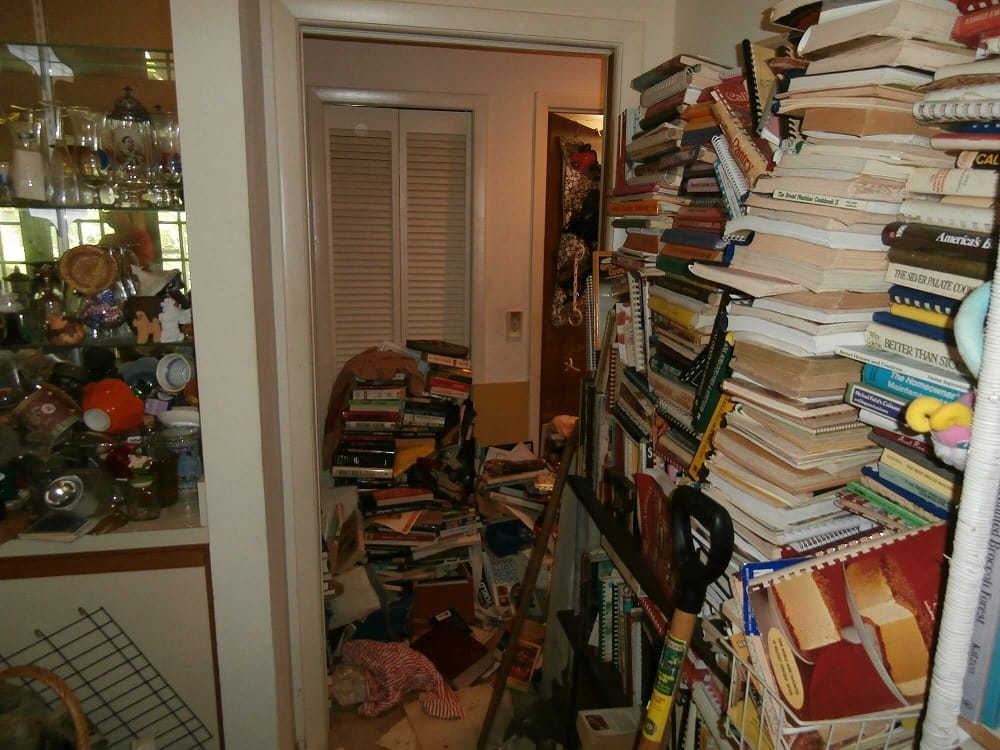Hoarding disorder is so much more than just clutter. It’s a mental health condition that affects about 2-6% of people, and it’s not as simple as being messy or disorganized. I’ve worked with families dealing with hoarding, and what I’ve learned is this: compassion is key. Cleanup can come later, but understanding has to come first.
What Does Hoarding Look Like?

Hoarding isn’t just about keeping too much stuff, it’s about the emotional weight attached to every item. For someone with hoarding disorder, letting go feels impossible. Maybe it’s a fear of wasting something, or a belief they’ll need it someday. I once worked with a client who kept every receipt from the past 20 years because throwing them away felt like losing a piece of their life.
The clutter takes over living spaces, making everyday life nearly impossible. Kitchens become unusable, beds are buried, and bathrooms are inaccessible. And here’s the hard part: many people with hoarding disorder don’t fully see how severe the problem is. They might know, logically, that they have too much stuff, but emotionally, they can’t let go.
Why Does Hoarding Happen?
Hoarding is rooted in the brain. Research shows differences in areas that control decision-making and emotional attachment. It’s not just a personality quirk, it’s a neurological condition. For many, hoarding is a way to cope with trauma, loss, or deprivation. I’ve seen clients who hold onto things to preserve memories or feel safe.
It often coexists with other mental health conditions, like depression, anxiety, or ADHD. Untangling these challenges takes time and patience, but it’s possible.
How Is Hoarding Treated?
The most effective treatment I’ve seen is cognitive-behavioral therapy tailored for hoarding (CBT-H). It addresses emotional attachments and decision-making struggles, often including home visits. Medications like SSRIs can help, especially if anxiety or depression is present, but they’re rarely enough on their own.
Professional organizers trained in hoarding can also be a huge help. They work alongside therapists to create systems that are both practical and emotionally manageable.
Finding Support
If you’re supporting a loved one with hoarding, know you’re not alone. Support groups and organizations like the International OCD Foundation offer resources and community. Many programs now focus on harm reduction, addressing safety concerns while respecting emotional needs.
Recovery Is Possible
Recovery isn’t about achieving a perfectly clean home, it’s about improving functionality and reducing distress. It’s a gradual process, but with the right support, people can reclaim their lives.
If you or someone you love is struggling, don’t hesitate to reach out. Help is out there, and recovery is possible. Behind every cluttered home is a person who deserves understanding and care.
References
American Journal of Psychiatry. “Neurobiological Correlates of Hoarding Disorder. “Clinical research findings https://www.psychiatry.org/hoarding-studies
International OCD Foundation. “Hoarding Disorder: Evidence-Based Treatment Guidelines.” Clinical resource database https://www.iocdf.org/hoarding
National Institute of Mental Health. “Hoarding Disorder: Recognition and Treatment. “Government mental health resources https://www.nimh.nih.gov/hoarding

